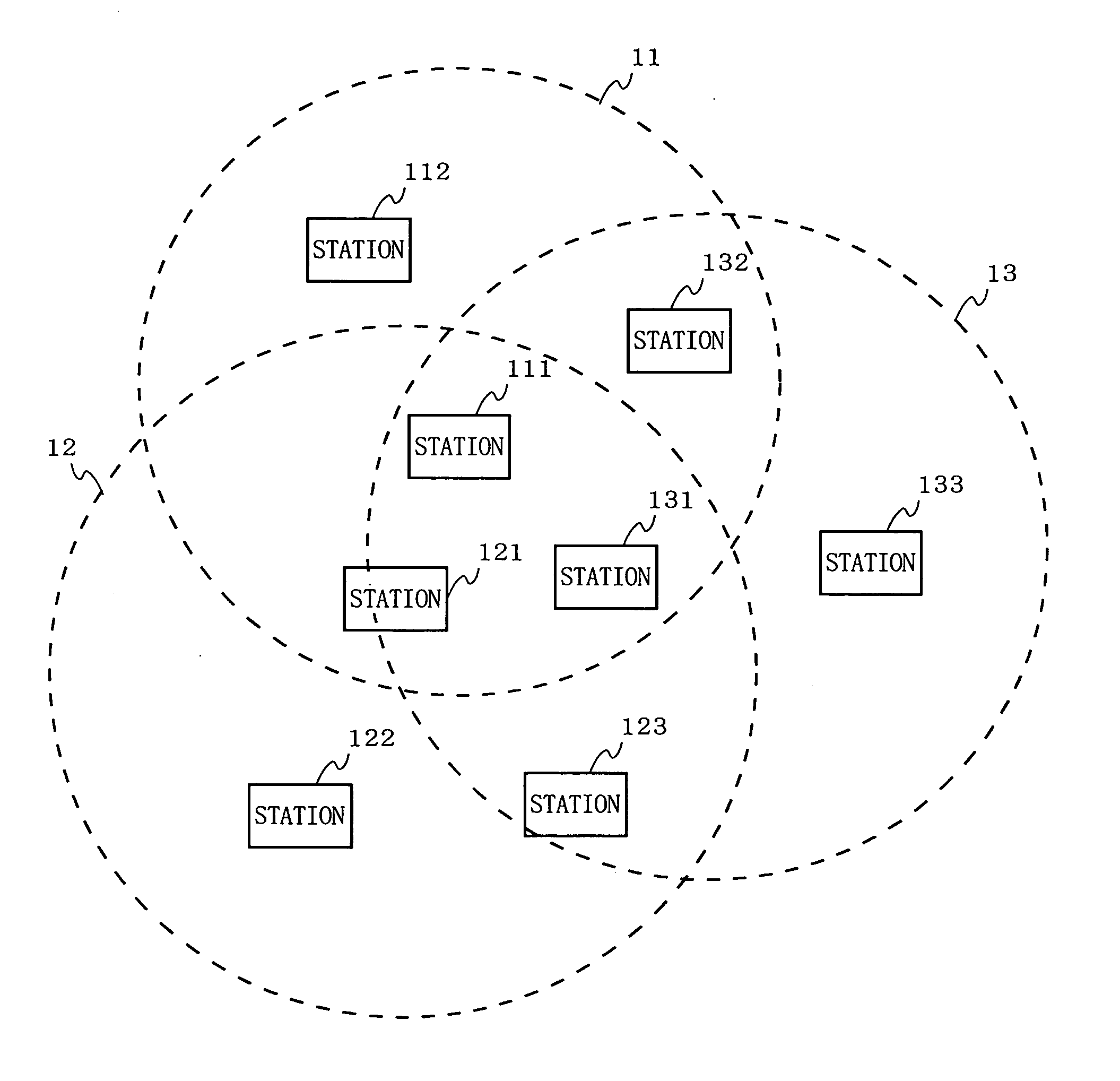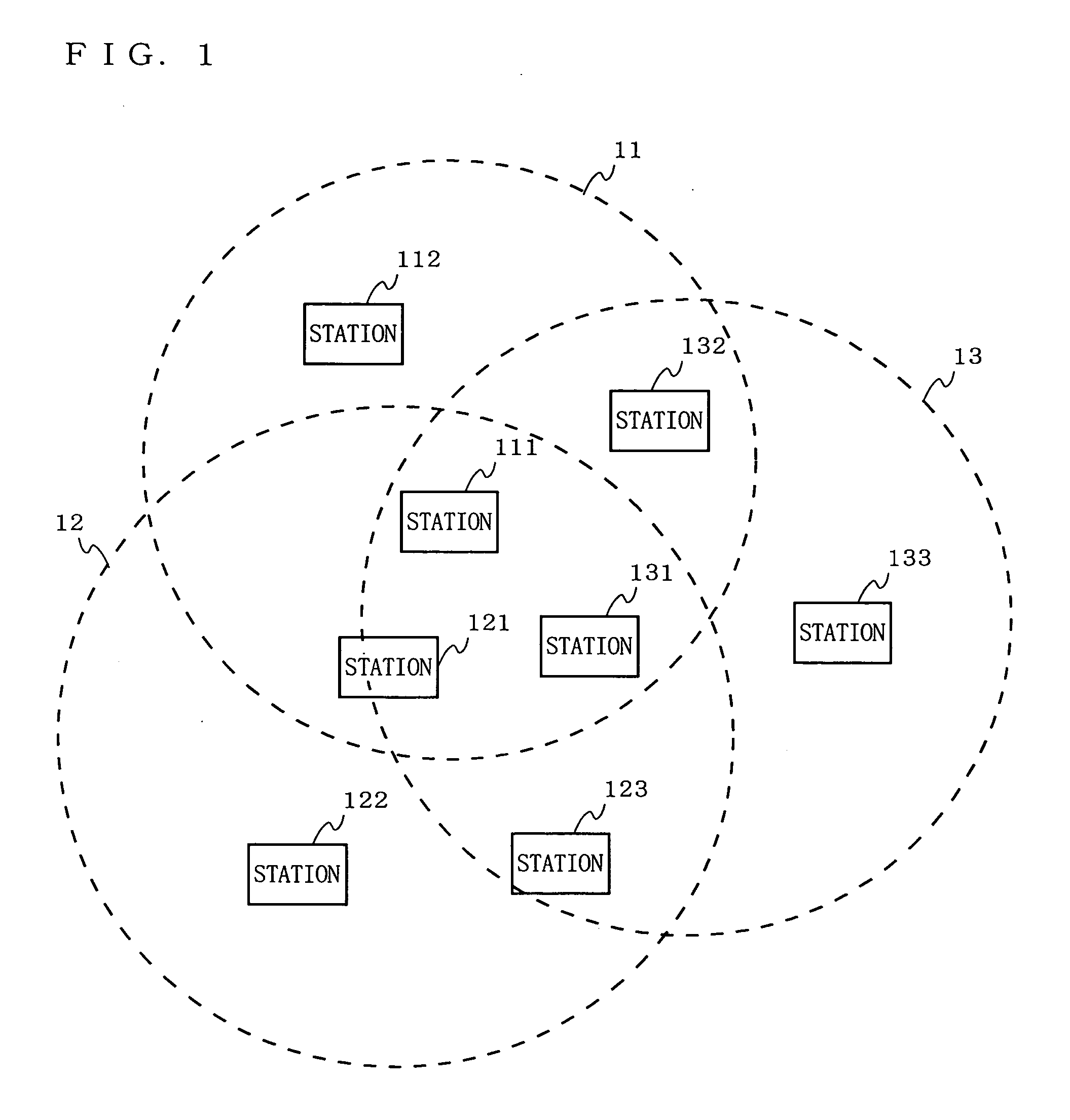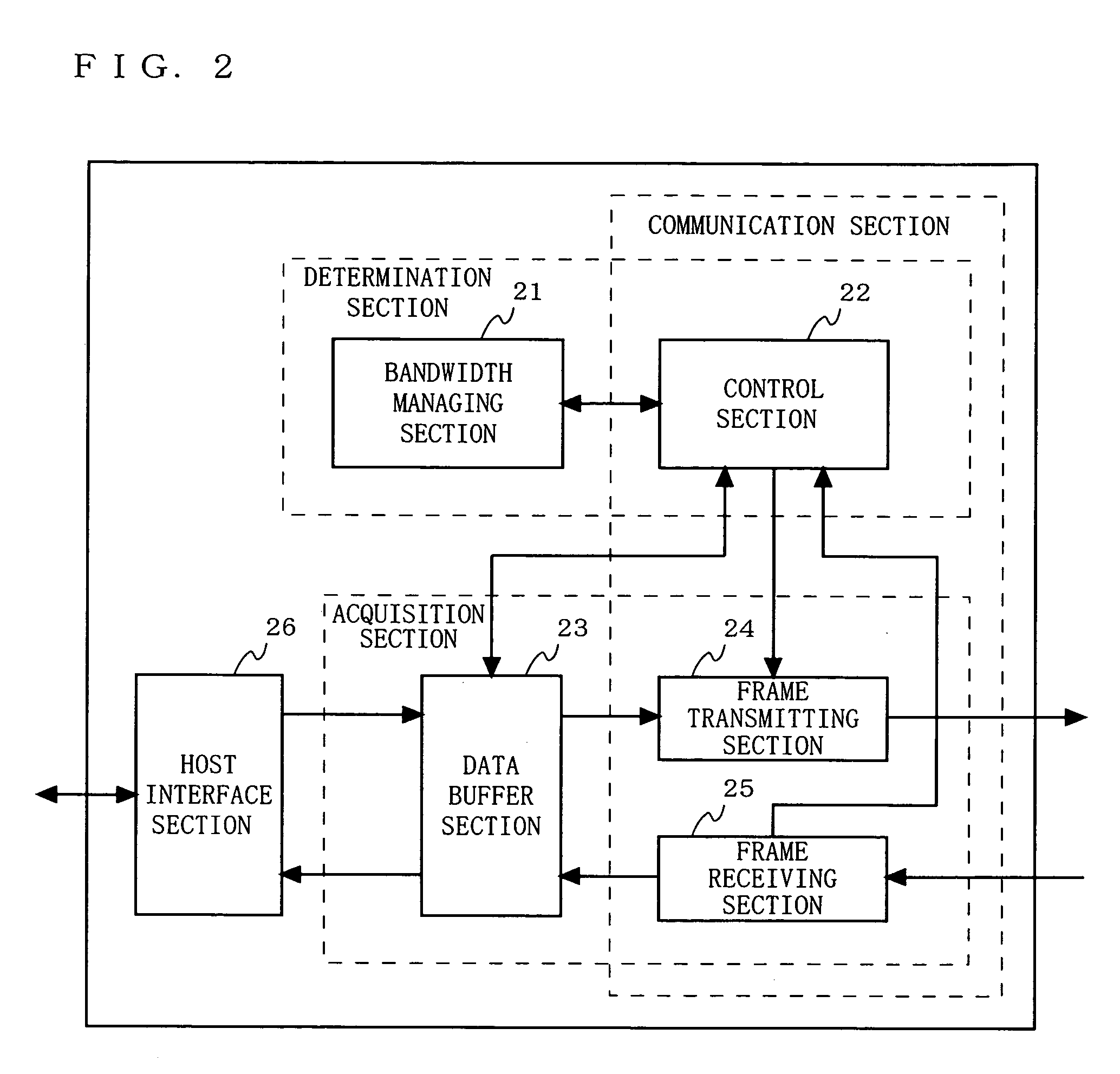Master station of communication system and access control method
a communication system and master station technology, applied in the direction of data switching network, wireless commuication services, signalling characterisation, etc., can solve the problems of not allowing one communication system to maintain, the amount of signal attenuation in one communication system may substantially exceed the amount of signal attenuation, and the device may be unable to perform device communication in the system, so as to achieve the effect of avoiding interference between communication systems
- Summary
- Abstract
- Description
- Claims
- Application Information
AI Technical Summary
Benefits of technology
Problems solved by technology
Method used
Image
Examples
first embodiment
[0046] (First Embodiment)
[0047]FIG. 4 is a timing chart for describing an access control method according to a first embodiment of the present invention. Note that, in the present embodiment, a case in which start times of the beacon periods are the same (i.e., start times of the beacon periods are previously synchronized) will be described. In order to synchronize start and end times of the beacon periods, a method which will be described in a third embodiment may be used, for example. Also, assume that information about a communication bandwidth used by a communication system is transmitted as information stored in a beacon packet. FIG. 5 is a flowchart for describing the access control method (bandwidth managing method) according to the first embodiment of the present invention.
[0048] As shown in FIG. 4, each of the control sections 22 included in the respective master stations 111, 121, and 131 performs a random back-off process within a beacon period for transmitting its own b...
second embodiment
[0059] (Second Embodiment)
[0060] In a second embodiment, with reference to FIGS. 10 to 14, a specific example of a case in which the access control method described in the first embodiment is applied to a power line communication system will be described. FIGS. 10 to 14 are illustrations showing a format of a beacon packet (beacon frame) used for power line communications for storing allocation information and announcing the information to the system.
[0061] Assume that TINF information included in VF (Variant Field) in frame control stores information about communication bandwidths T1 to Tn, which are necessary for assuring QoS and accepted by a plurality of master stations 1 ton (n is an arbitrary integer), respectively. Also, as shown in FIG. 14, schedule information SI included in a data body section of a beacon packet stores information about an allocated time of a beacon period, an allocated time AT of a Controlled-CSMA period, and an allocated time of a Normal-CSMA period. In...
third embodiment
[0070] (Third Embodiment)
[0071] In a third embodiment, a process for synchronizing start and end times of the beacon periods, the process being usable in combination with the access control method described in the first embodiment, will be described. FIG. 15 is a flowchart showing a procedure of an access control method according to the third embodiment of the present invention (master station side). FIG. 16 is a flowchart showing a procedure of an access control method according to the third embodiment of the present invention (slave station side).
[0072] Each master station individually determines whether or not a beacon packet is newly received (step S1501). In the case where the beacon packet is not received, the master station acquires a value of its own timer (step S1502). The master station determines whether or not the acquired timer value reaches a start time of a beacon period (step S1503). If a start time is not reached, a process is returned to step S1501. If a start tim...
PUM
 Login to View More
Login to View More Abstract
Description
Claims
Application Information
 Login to View More
Login to View More - R&D
- Intellectual Property
- Life Sciences
- Materials
- Tech Scout
- Unparalleled Data Quality
- Higher Quality Content
- 60% Fewer Hallucinations
Browse by: Latest US Patents, China's latest patents, Technical Efficacy Thesaurus, Application Domain, Technology Topic, Popular Technical Reports.
© 2025 PatSnap. All rights reserved.Legal|Privacy policy|Modern Slavery Act Transparency Statement|Sitemap|About US| Contact US: help@patsnap.com



